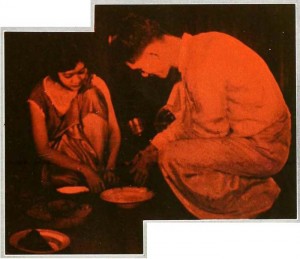
"The feature length photoplay produced in Siam by Nai Bernard Juangbhanich is one of the best of the serious dramatic efforts produced by amateurs. The story deals with the profligacy of a young Siamese who has been educated in Europe. Feeling superior to an ordinary business career, the young man determines to write, with the consequent search for "experience and atmosphere." In the succession of romantic episodes that follow, the theme of the tale is developed with extraordinary skill and, in spite of the manifest satire in several of the sequences, the picture includes many sincere glimpses into the social life and customs of the upper classes of Siam. Completely blinded and embittered as the result of his folly, the protagonist finally comes to terms with himself and actually does succeed as an author. Although this plot follows a familiar outline, Mr. Juangbhanich again proves that it is not the essential plot but the treatment that counts. The picture includes flaws both in photography and continuity but they appear unimportant in view of the general photographic quality and the epic nature of the treatment. It was recently screened for the staff of the Academy of Motion Picture Arts and Sciences." Movie Makers, Dec. 1930, 759, 787.
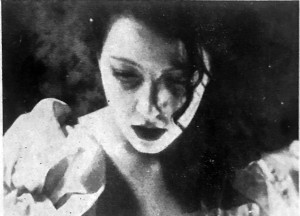
"È la storia di una giovane donna di strada, Lilly. Uno scrittore Stefano Berg, attratto dal suo fascino, una sera la conduce a casa sua e se la tiene con se. In Lilly egli trova gli elementi del personaggio di un suo nuovo romanzo “Resurrectio”. L’opera è iniziata, il giovane scrittore ha già creato nella sua fantasia la trasformazione del personaggio. Nella realtà, però, anche Lilly va trasformandosi; ella già sente di non essere la donna di un tempo: sente d’amare Stefano Berg, che preso intensamente dell’ardore del suo romanzo non si avvede di tale trasformazione e l’abbandona. La giovane donna ritorna quella che era. Un attimo di sgomento ed ecco il suicidio. Il romanzo intanto è già ultimato: la storia della vita di Lilly già passa per le mani di tuti segnando il successo per Stefano Berg."
"It is the story of a young streetwalker, Lilly. A writer Stefano Berg, attracted by her charm, takes her to his home one evening and keeps her with him. In Lilly, he finds the elements of the character for his new novel of his, ""Resurrectio."" The work has begun, the young writer has already fantasized the character’s transformation. In reality, however, Lilly will transform herself; she already feels that she is not the woman she once was: she feels that she loves Stephen Berg, who, intensely caught up in the passion of his novel, does not notice this transformation and abandons her. The young woman returns to what she was. A moment of dismay and suddenly the suicide. In the meantime, the novel is already finished: the story of Lilly's life is already in everyone's hands, marking a success for Stefano Berg."
—Notizario delle sezioni cinematografiche dei gruppi universitari fascisti a cura del ministero della cultura popolare, September 1938 p. 9-10
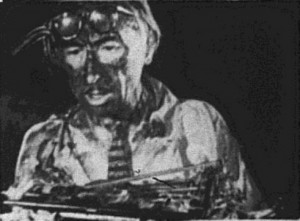
"What happens when a modern gentleman of advancing years advertises for a mail-order bride and tries to answer the applicant of his choice? Der Brief, (The Letter), an excruciatingly funny farce by Dr. Oscar Wurmboeck, gives us one answer to this problem, as our shy but determined hero is confronted at every turn by confusion and frustration. Everything happens - the ink spills, the fountain pen leaks, the mechanical pencil won't hold leads, the wooden ones won't sharpen, and the typewriter refuses to type - to deter our man from his course. Competent camera work, incisive direction and crisp editing serve to point up the brilliant and appealing portrayal of the unfortunate lover by Rudy Rattinger, so that Der Brief builds quickly and smoothly from laughter to hysterics. Here is pure farce in the old tradition. It is nice to welcome it back to the filmic fold after too long an absence" PSA Journal, Jan. 1955, 50.
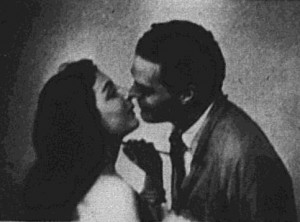
"Strangely enough, although its producers may or may not have intended it, Entre dos Rosas (Between Two Roses) is essentially an old-fashioned morality play set forth in fairly modern filmic turns. For here is a handsome young artist as the protagonist of the action. Here, in the girl of a white rose, is the embodiment of virtue; while there, in the girl of the red rose, is the embodiment of evil. And, overlooking this eternal tug of war, is the figure of Fate or Destiny. Only at the end does Entre dos Rosas turn away from the classic formula, since, with a realistic and more modern psychology than that which stirred the medieval dramatist, it refuses to resolve the ultimate struggle. To the drawing of this age-old triangle, Carlos Barrios Baron has brought stimulating though deliberate direction, while Alfredo Rubio has interpreted his ideas in monochrome imagery which is both visually creative and dramatically compelling. Although Entre dos Rosas of leaves its classic central problem unsolved. It is a striking experimental film well worthy of study by less daring movie makers" PSA Journal, Jan. 1954, 50.
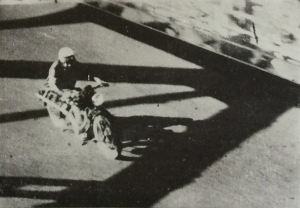
"a soggetto breve"/ short fiction
"EVA E LA MACCHINA
Eva e la Macchina soggetto e regla di Leone Viola, fotografia e montaggio di Fernando De Marzi, interpreti Parisina Poggi, Carlomaria Dermal, Guido Cerato, svolge come tema il contrasto e nello stesso tempo il rapporto tra il maschio in possesso della femmina e il motociclista nel possesso della sua macchina. L'ambiente e per una parte primitivo e naturale, per l'altra invece si svolge presso un ponte di ferro e un passaggio a livello. I due motivi corrono parallelamente sino alla fine, allorché il Viola persegue il motivo della macchina sola, sino al finale gocciolare dell'olio, il cui parallelo rimane soltanto presunto. Eva e la Macchina si avvale di un ottimo ritmo di montaggio, dove al crescendo assai bene ottenuto della parte centrale succede il finale altrettanto realizzato nella sua calma compostezza."
"EVA AND THE CAR
Eva e la macchina (Eva and the Machine), screenplay and direction by Leone Viola, photography and editing by Fernando De Marzi, starring Parisina Poggi, Carlomaria Dermal, Guido Cerato, develops as its theme the contrast and simultaneous relationship between the male in possession of the female and the motorcyclist in possession of his machine. The environment is on the one hand primitive and natural, and on the other, the film takes place near an iron bridge and a level crossing. The two motifs run parallel until the end, when Viola pursues the motif of the machine alone, until the final drip of oil, whose parallel remains only presumed. Eva and the Machine avails itself of an excellent rhythm of montage, where the very successful crescendo of the central part is followed by the finale equally successful in its calm composure."
— Il ventuno 24 (Review of the G.U.F. of Venice) January 1935, p. 15
"Eyes Talk is the only silent film to place in this year's Festival, but it needs no sound, for the yes of a man and a woman do all the talking that is necessary. A two-minute shorty that tells a complete story" PSA Journal, Aug. 1967, 37.
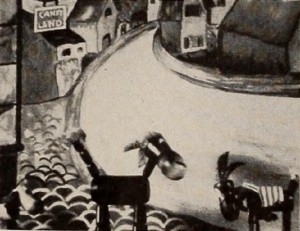
"Using animated puppets and hand painted water color backgrounds, Charles H. Benjamin, in Fantasy in Toyland, takes a curious dog through the horrors usually reserved for white knights, to save a fabulous female canine in distress. The story is old but the treatment is new. The puppets were manipulated from below stage level and filmed frame by frame with a remotely controlled camera. The star of the piece meets cows, dragons and various beasts made of pine cones and other strange raw materials. The film ends on the accepted romantic note." Movie Makers, Dec. 1947, 536-537.
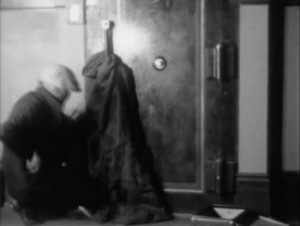
"Mystery romance in which the police chief's daughter is courted by a crook." Library and Archives Canada.
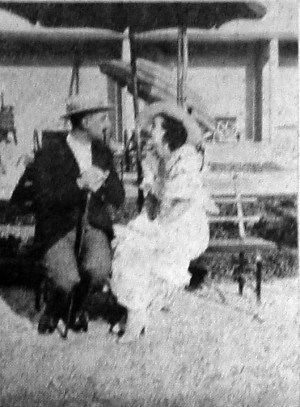
"avant-garde documentary"
"Fiera di tipi, realizzata da Leone Viola con la collaborazione tecnica di Fernando de Marzi, si svolge tutta sullo sfondo della Fiera di Padova ed ha una trama impostata su ben sette personaggi di primo piano. Ma i realizzatori hanno saputo imprimere a ciascuno di essi una fisonomia inconfondibile creando anche due gustose macchiette: ma i caratteri non sono caricati: la vicenda scorre dall'uno all'altro dei personaggi, si imbroglia, si ricompone: la Fiera di Padova è di sfondo all-azione che senza fiera non esisterebbe; tanto tutti gli episodi sono strettamente connessi a quella manifestazione. La fotografia, dovuta a Dodi Calcagno, è in qualche punto un po' oscura, altrove assume un brillante risalto. Le doti narrative dei realizzatori si manifestano in questo film della durata di un'ora, ed è intanto — a parte gli altri pregi del film—non poco. Qualche lieve ritocco al montaggio si renderebbe necessario, allo scopo di raggiungere una completa omogeneità narrrativa. Noi parlando nel nostro passato numero prevedevamo il successo che questo film ha ottenuto, che sarà di incoraggiamento ai giovani volenterosi."
"Fiera di tipi, directed by Leone Viola with the technical collaboration of Fernando de Marzi, takes place against the backdrop of the Padua Fair and has a plot based on seven leading characters. But the creators were able to give each of them an unmistakable physiognomy, also creating two tasty little characters: but the characters are not privileged: the story flows from one character to the other, is cheated, is recomposed: the Fair of Padova is the background to the action that would not exist without the fair; all the episodes are closely related to that event. The photography, by Dodi Calcagno, is at some points a little obscure, elsewhere it takes on a brilliant prominence. The narrative talents of the filmmakers are manifested in this one-hour film, and is meanwhile - apart from the other merits of the film - not insignificant. A few slight adjustments to the editing would be necessary in order to achieve complete narrative homogeneity. We, speaking of it in our past issue, predicted the success this film has achieved, which will be an encouragement to willing young people."
From "Gazzetta di Venezia" republished in "Cine-club Padova," Eco del cinema, n. 130, 1934
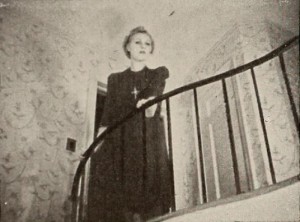
"Boy meets girl and color meets a cine club in Footloose, the latest production of the Rockville Cinema Club; the result is an able and entertaining farce comedy. In moving from black and white to Kodachrome, the members of this veteran group have taken the hurdle in their stride. If anything, the chromatic medium may be said to have added sparkle and brilliance to their plot complications and to the angles, editing and cutting with which they interpret them. Definitely keyed to the Hollywood '"screwball" school of roughhouse comedy, Footloose opens with a dynamic and delightful introduction of the players and carries on to involve a boy and a girl, an artist, his model and assorted comedy and character actors, in random but romantic complications. The pace is fast, the color pleasing and the cutting crisp and well integrated with the action." Movie Makers, Dec. 1940, 602.
Total Pages: 6